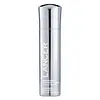What's inside
What's inside
 Key Ingredients
Key Ingredients

 Benefits
Benefits

 Concerns
Concerns

 Ingredients Side-by-side
Ingredients Side-by-side

Water
Skin ConditioningCaprylic/Capric Triglyceride
MaskingHeptyl Undecylenate
EmollientNiacinamide
SmoothingPolyacrylate-13
Glycerin
HumectantRetinol
Skin ConditioningUbiquinone
AntioxidantAvena Sativa Kernel Extract
AbrasiveHydroxymethoxyphenyl Decanone
Skin ConditioningBisabolol
MaskingCeramide NP
Skin ConditioningTremella Fuciformis Sporocarp Extract
AntioxidantBetaine
HumectantTocopheryl Acetate
AntioxidantCaprylyl Glycol
EmollientC12-15 Alkyl Benzoate
AntimicrobialCetyl Palmitate
EmollientPolysorbate 20
EmulsifyingDisodium EDTA
Ethylhexylglycerin
Skin ConditioningCaprylhydroxamic Acid
Trideceth-6 Phosphate
EmulsifyingPhenoxyethanol
PreservativePolyisobutene
Sodium Hydroxide
BufferingWater, Caprylic/Capric Triglyceride, Heptyl Undecylenate, Niacinamide, Polyacrylate-13, Glycerin, Retinol, Ubiquinone, Avena Sativa Kernel Extract, Hydroxymethoxyphenyl Decanone, Bisabolol, Ceramide NP, Tremella Fuciformis Sporocarp Extract, Betaine, Tocopheryl Acetate, Caprylyl Glycol, C12-15 Alkyl Benzoate, Cetyl Palmitate, Polysorbate 20, Disodium EDTA, Ethylhexylglycerin, Caprylhydroxamic Acid, Trideceth-6 Phosphate, Phenoxyethanol, Polyisobutene, Sodium Hydroxide
Water
Skin ConditioningGlycolic Acid
BufferingC12-15 Alkyl Benzoate
AntimicrobialCyclopentasiloxane
EmollientCetearyl Alcohol
EmollientGlycerin
HumectantGlyceryl Stearate
EmollientPEG-100 Stearate
Polyacrylamide
Dimethicone
EmollientCetearyl Glucoside
EmulsifyingSqualane
EmollientAmmonium Hydroxide
BufferingPhenoxyethanol
PreservativeC13-14 Isoparaffin
EmollientTocopheryl Acetate
AntioxidantCamellia Sinensis Leaf Extract
AntimicrobialSodium Hyaluronate
HumectantHydrolyzed Glycosaminoglycans
HumectantUbiquinone
AntioxidantPhospholipids
Skin ConditioningRetinyl Palmitate
Skin ConditioningAscorbyl Palmitate
AntioxidantXanthan Gum
EmulsifyingSodium Benzoate
MaskingLaureth-7
EmulsifyingDisodium EDTA
Lavandula Angustifolia Oil
MaskingLinalool
PerfumingWater, Glycolic Acid, C12-15 Alkyl Benzoate, Cyclopentasiloxane, Cetearyl Alcohol, Glycerin, Glyceryl Stearate, PEG-100 Stearate, Polyacrylamide, Dimethicone, Cetearyl Glucoside, Squalane, Ammonium Hydroxide, Phenoxyethanol, C13-14 Isoparaffin, Tocopheryl Acetate, Camellia Sinensis Leaf Extract, Sodium Hyaluronate, Hydrolyzed Glycosaminoglycans, Ubiquinone, Phospholipids, Retinyl Palmitate, Ascorbyl Palmitate, Xanthan Gum, Sodium Benzoate, Laureth-7, Disodium EDTA, Lavandula Angustifolia Oil, Linalool
Ingredients Explained
These ingredients are found in both products.
Ingredients higher up in an ingredient list are typically present in a larger amount.
C12-15 Alkyl Benzoate is made up of Benzoic Acid and long chain alcohols. It has a low molecular weight.
C12-15 Alkyl Benzoate is an emollient and texture enhancer. Due to its solubility, it is often used in sunscreens to help evenly distribute active ingredients.
As an emollient, C12-15 Alkyl Benzoate helps soften and hydrate your skin. Emollients create a film on your skin that traps moisture within.
This ingredient has been reported to cause eye irritation.
Learn more about C12-15 Alkyl BenzoateDisodium EDTA plays a role in making products more stable by aiding other preservatives.
It is a chelating agent, meaning it neutralizes metal ions that may be found in a product.
Disodium EDTA is a salt of edetic acid and is found to be safe in cosmetic ingredients.
Learn more about Disodium EDTAGlycerin is already naturally found in your skin. It helps moisturize and protect your skin.
A study from 2016 found glycerin to be more effective as a humectant than AHAs and hyaluronic acid.
As a humectant, it helps the skin stay hydrated by pulling moisture to your skin. The low molecular weight of glycerin allows it to pull moisture into the deeper layers of your skin.
Hydrated skin improves your skin barrier; Your skin barrier helps protect against irritants and bacteria.
Glycerin has also been found to have antimicrobial and antiviral properties. Due to these properties, glycerin is often used in wound and burn treatments.
In cosmetics, glycerin is usually derived from plants such as soybean or palm. However, it can also be sourced from animals, such as tallow or animal fat.
This ingredient is organic, colorless, odorless, and non-toxic.
Glycerin is the name for this ingredient in American English. British English uses Glycerol/Glycerine.
Learn more about GlycerinPhenoxyethanol is a preservative that has germicide, antimicrobial, and aromatic properties. Studies show that phenoxyethanol can prevent microbial growth. By itself, it has a scent that is similar to that of a rose.
It's often used in formulations along with Caprylyl Glycol to preserve the shelf life of products.
Tocopheryl Acetate is AKA Vitamin E. It is an antioxidant and protects your skin from free radicals. Free radicals damage the skin by breaking down collagen.
One study found using Tocopheryl Acetate with Vitamin C decreased the number of sunburned cells.
Tocopheryl Acetate is commonly found in both skincare and dietary supplements.
Learn more about Tocopheryl AcetateUbiquinone (Coenzyme Q10) is a molecule already found in our bodies. It is a potent antioxidant and skin-soothing ingredient.
Aging and environmental exposure diminishes our skin's natural ubiquinone levels. This is much like our natural collagen and elastin.
The good news is: studies show applying this ingredient topically replenishes ubiquinone levels in our skin. This also comes with a ton of skin benefits. These benefits include:
Ubiquinone is considered a large molecule and cannot be absorbed into the lower layers of skin. This is why it is believed to be such an effective antioxidant: it protects our skin in the upper layers and prevents damage in the deeper layers.
When used in sunscreen, ubiquinone is shown to increase ingredient stability, increase SPF factor, and add to infrared protection.
Fun fact: ubiquinone is fat-soluble.
Learn more about UbiquinoneWater. It's the most common cosmetic ingredient of all. You'll usually see it at the top of ingredient lists, meaning that it makes up the largest part of the product.
So why is it so popular? Water most often acts as a solvent - this means that it helps dissolve other ingredients into the formulation.
You'll also recognize water as that liquid we all need to stay alive. If you see this, drink a glass of water. Stay hydrated!
Learn more about Water